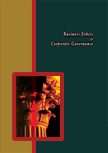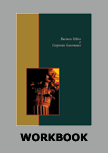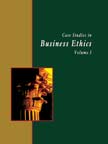Microsoft Antitrust Case




|
|
ICMR HOME | Case Studies Collection
Case Details:
Case Code : BECG006
Case Length : 10 Pages
Period : 1990 - 2001
Pub. Date : 2002
Teaching Note : Available
Organization : Microsoft Corporation, Department of Justice, USA
Industry : Information Technology
Countries : USA
To download Microsoft Antitrust Case case study (Case Code:
BECG006) click on the button below, and select the case from the list of available cases:

Price:
For delivery in electronic format: Rs. 300;
For delivery through courier (within India): Rs. 300 + Rs. 25 for Shipping & Handling Charges
»
Business Ethics Case Studies
» Case Studies Collection
» ICMR Home
» Short Case Studies
» View Detailed Pricing Info
» How To Order This Case
» Business Case Studies
» Case Studies by Area
» Case Studies by Industry
» Case Studies by Company 
Please note:
This case study was compiled from published sources, and is intended to be used as a basis for class discussion. It is not intended to illustrate either effective or ineffective handling of a management situation. Nor is it a primary information source.
|
|
<< Previous
Microsoft A Monopoly? Contd...
|
Some analysts argued that the overwhelming market share that
Microsoft held was a major impediment to innovations in the software industry.2
Microsoft was not only a leading player, but also the standards provider for the
industry. By controlling the standards, the company was in a position to curb
innovations.
Microsoft, however, maintained that its dominance of the market was due to its
superior products and not because of any unfair market practices. In 2000, the
US Department of Justice (DOJ) ruled that Microsoft be split into two smaller
companies to prevent it from indulging in anti competitive practices.
|
|
However, in June 2001, the US Court of Appeals reversed this
ruling, but said that Microsoft did have a monopoly3
in the market and had violated US antitrust laws. (Refer Exhibit I for US
antitrust policy).
|
In August
2001, Microsoft appealed to the US Supreme Court to overturn the ruling
that Microsoft was an illegal monopoly. A final verdict on the case was
expected by October 2001. (Refer Exhibit II for the chronology of events
in the case.)
The Trial Begins
In October 1997, the DOJ began antitrust
investigations to determine whether Microsoft was violating a 1994
consent decree4 by compelling PC makers to ship its Internet browser free
with Windows 95. Joel I. Klein, Assistant Attorney General for the
antitrust division, remarked, "This kind of product-forcing is an abuse
of monopoly power--and we will seek to put an end to it."... |
Excerpts >>
|
|





